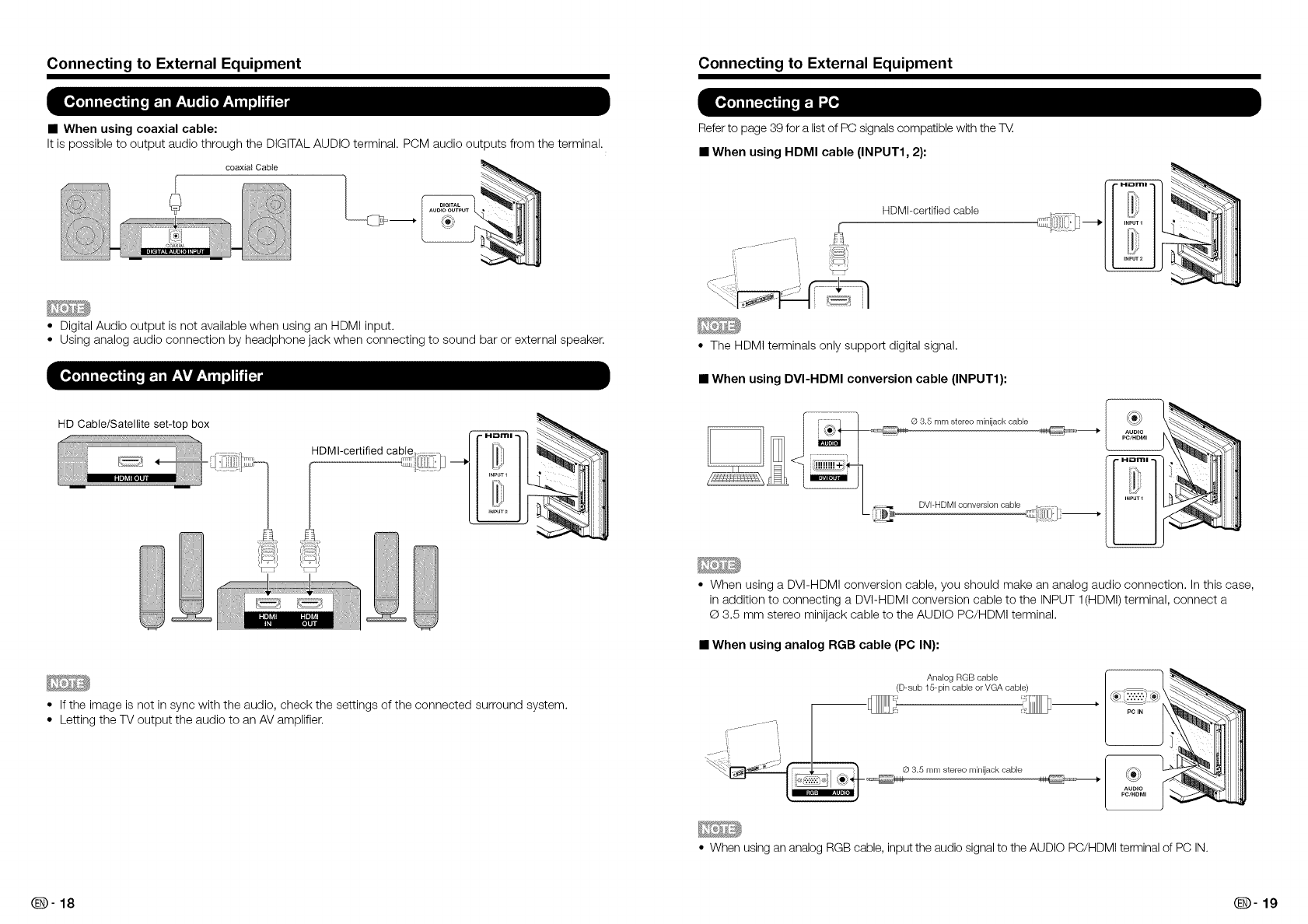
Connecting to External Equipment
• When using coaxial cable:
Connecting to External Equipment
It is possible to output audio through the DIGITAL AUDIO terminal. PCM audio out
coaxial Cable
f
)uts from the terminal.
Refer to page 39 for a list of PC signals compatible with the TV:.
• When using HDMI cable (INPUT1, 2):
HDMbcertified cable
_2.\_.<_._-.
• Digital Audio output is not available when using an HDMI input.
• Using analog audio connection by headphone jack when connecting to sound bar or external speaker.
HD Cable/Satellite set-top box
_
_dH
• If the image is not in sync with the audio, check the settings of the connected surround system.
• Letting the TV output the audio to an AV amplifier.
• The HDMI terminals only support digital signal.
• When using DVI-HDMI conversion cable (INPUT1):
G 3.5 mm stereo minijack cable
DVI-HDMI conversion cable
• When using a DVI-HDMI conversion cable, you should make an analog audio connection. In this case,
in addition to connecting a DVI-HDMI conversion cable to the INPUT 1(HDMI) terminal, connect a
© 3.5 mm stereo minijack cable to the AUDIO PC/HDMI terminal.
• When using analog RGB cable (PC IN):
Analog RGB cable _l I _"_,_
(D-sub 1S-pin cable or VGA cable) __._._..._
_-.................-'t ilil
• When using an analog RGB cable, input the audio signal to the AUDIO PC/HDMI terminal of PC IN.
Q- 18 Q- 19
